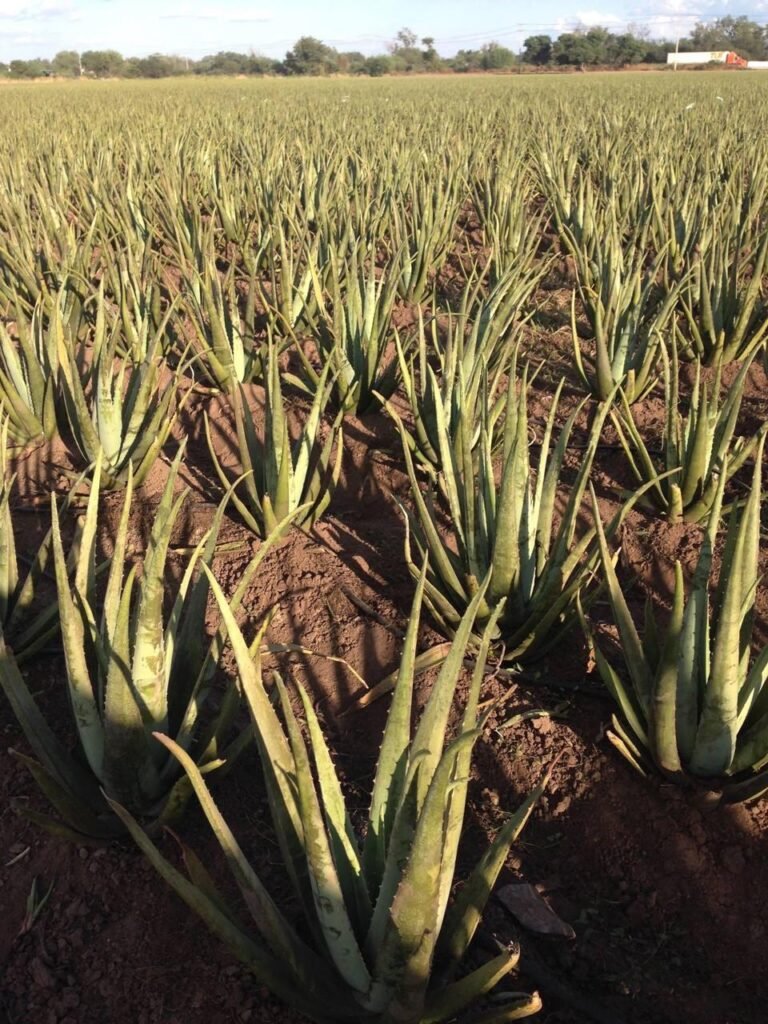Aloe Main Constituents

These are the main Aloe Constituents:
Amino Acids
Aloe provides 20 of the 22 human required amino acids and 7 of the 8 essential ones. The amino acids provides the basic building blocks of proteins in the production of muscle tissue etc, and the human body cannot manufacture them.
Anthraquinones
Aloe provides 12 anthraquinones: Aloe emodin, Aloetic Acid, Aloin, Anthracine, Antranol, Barbaloin, Chrysophanic Acid, Emodin, Ethereal Oil, Ester of Cinnamonic Acid, Isobarbaloin, Resistannol.
In relatively small concentrations together with the Gel fraction they provide Analgesic, Antibacterial, Antifungal and Antiviral activity. In high concentration on their own they can be toxic. Are also known as aloe bitter, aloe bitter sap, aloe gum, or aloe laxatives.
The antraquinones are found in the sap. The anthraquinone derivatives (anthrones and chromones) comprise the phenolic fraction of the sap. The primary sap component is Aloin/Barbaloin anthrone derivative.
Enzymes
Aloe provides 8 enzymes: Aliiase, Alkaline Phosphatase, Amylase, Carboxypeptidase, Catalase, Cellulase, Lipase, Peroxidase. The enzymes help breakdown of food sugars and fats aiding digestion and enhancing nutrient absorbtion.
Hormones
Auxins and Gibberellins. Wound Healing and Anti-inflammatory.
Lignin
It is a cellulose based substance.Thought to provide penetrating power in Aloe vera skin preparations and may act as a carrier for other components
Minerals
Aloe provides 9 minerals: Calcium, Chromium, Copper, Iron, Magnesium, Manganese, Potassium, Sodium, Zinc Minerals are essential for good health and is known to work in certain combination with each other, vitamins and other trace elements
Salicylic Acid
Aspirin like compound. It is an analgesic.
Saponins
They are glycosides. Saponins are a soapy substance both cleansing and antiseptic.
Sterols
Aloe provides 4 main plant steroids: Cholesterol, Campesterol, Lupeol, ß Sitosterol. Are anti-inflammatory agents. Lupeol also possesses antiseptic and analgesic properties.
Sugars
Monosaccharides: glucose and fructose.
Polysaccarides: gluco-mannans / polymannose.
They have anti-inflammatory action. Acemannan is an anti-viral, and generates immune modulating activity. The long chain gluco-mannans are absorbed intact by the pinocytotic process of certain cells lining the digestive tract.
Vitamins
A, C, E, B, Choline, B12, Folic Acid
They are antioxidant (A,C,E): neutralises free radicals. B’s and Choline involved in amino acid metabolism, B12 required for production of red blood cells, Folic Acid in the development of blood cells.
References
The Essential Aloe Vera, The Actions And The Evidence, by Dr Peter Atherton, 2nd Edition, 1997
The Health and Medical Use of Aloe Vera by Lawrence G Plaskett, PhD, FRSC, 1998 {ISBN:0-943685-21-4}
Aloe Vera: A Scientific Approach by Robert H Davis, PhD, 1997 {ISBN:0-533-12137-X}
The Silent Healer A Modern Study of Aloe Vera, by Bill C Coates, R.Ph., C.C.N. with Robert Ahola, 3rd Edition, 1996
Aloe Vera: Nature’s Soothing Healer by Diane Gage, 1996 {ISBN:0-89281-627-9}